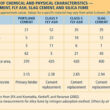In the intricate dance of construction, welding emerges as the silent maestro, seamlessly fusing materials to bring architectural visions to life. As steel and concrete embrace a symphony of strength, welding takes center stage in the construction narrative.
From towering skyscrapers to intricate bridges, welding stands as the unyielding force that binds the elements of construction.
As beams intertwine and structures rise to touch the sky, the art of welding serves as the unifying force, seamlessly joining disparate elements into a cohesive whole.
This article aims to illuminate the multifaceted significance of welding in the construction industry, exploring not only its technical intricacies but also its profound impact on the durability, integrity, and aesthetic appeal of the built environment.

1. Structural Integrity
Structural integrity is the capacity of a structure to withstand its intended loads and environmental conditions while maintaining its stability and safety over time.
Welding is a cornerstone in ensuring structural integrity within construction by serving as the primary method for joining various structural components.
Welding plays a key role in enhancing structural integrity by enabling the creation of continuous and seamless connections between components like beams, columns, and support elements.
This cohesion is crucial for distributing loads evenly throughout the structure, mitigating potential weak points and vulnerabilities.
Welding allows for the customization of structural elements, adapting them to specific design requirements and optimizing their performance.
Like Us on Facebook!
In essence, the precision and reliability of welding techniques are instrumental in achieving and maintaining the structural integrity essential for the safety and functionality of buildings and infrastructure.
Subscribe Us on YouTube!
2. Connection of Components
Welding is instrumental in the connection of components within construction, acting as the linchpin that binds various elements together to form a cohesive and functional structure.
This process involves joining materials, commonly metals, through the application of heat and pressure, resulting in robust and seamless connections.
In the construction of buildings and infrastructure, welding is extensively used to connect crucial components such as beams, columns, and trusses, creating a unified framework that withstands the forces imposed on the structure.
The adaptability of welding techniques further enables the connection of components with diverse shapes and sizes, accommodating the intricate designs and engineering specifications essential in modern construction projects.
3. Repair and Maintenance
When components experience wear, damage, or structural issues over time, skilled welders are often called upon to restore and reinforce these elements.
Whether it’s fixing a cracked beam, reinforcing a weakened joint, or repairing metal components, welding provides a versatile and effective solution for addressing a wide range of structural issues.
Finding the right welding tools also plays a key role in repair and maintenance in the construction industry. You can visit pfsno.com for the best welding materials that would be adequate for construction.
Welders can effectively mend structural elements, restoring their original strength and integrity. This process extends the lifespan of buildings and infrastructure, contributing to sustainable and cost-effective solutions.
4. Customization and Precision
In construction projects, each structure often demands unique specifications, and welding offers a versatile solution to tailor components to precise design requirements.
Welders can adapt their techniques to accommodate specific shapes, sizes, and configurations, allowing for the creation of customized structural elements that fit seamlessly into complex architectural designs.
The precision achievable through welding ensures that construction components are fabricated with accuracy, meeting stringent engineering standards.
This level of precision is vital for creating a seamless integration of parts, optimizing load distribution, and enhancing the overall efficiency of the structure.
5. Aesthetic Contribution
Beyond its foundational role in creating structurally sound connections, welding offers a canvas for artistic expression and design innovation.
Skilled welders become artisans, molding raw materials into intricate forms that transcend mere functionality, elevating structures to works of art.
In the realm of architectural ornamentation, welding enables the fabrication of unique and visually striking elements. From ornate metalwork adorning facades to delicate filigree embellishments, welding transforms structural components into captivating features that fascinate the eye.
This fusion of functionality and aesthetics is particularly evident in contemporary structures, where welding is not just a construction method but a means of sculpting the visual identity of a space.
Clean and well-executed weld seams themselves become design elements, reflecting a commitment to craftsmanship. Modern architectural styles often embrace the raw and industrial beauty of welds, showcasing them as integral parts of the overall design.
6. Material Fusion
Welding plays a foundational role in material fusion, a critical process in the construction industry that involves joining disparate materials to form a unified and robust structure.
In construction projects, the materials used often vary in composition and properties, requiring a method to seamlessly integrate them for optimal strength and functionality. Welding, with its ability to create strong and durable bonds, emerges as the primary technique for material fusion, ensuring the synthesis of diverse elements into a cohesive whole.
The fusion of materials through welding is particularly evident in the construction of steel structures, where different steel components must be joined to create load-bearing frameworks.
The adaptability of welding techniques allows construction professionals to tailor the material fusion process to specific project requirements. Whether creating joints for high-rise buildings or connecting intricate components in architectural designs, welding provides the precision necessary for fusing materials with varying shapes and sizes.
In essence, welding’s role in material fusion is foundational, serving as the linchpin that unites diverse materials and forms the resilient backbone of structures in the construction landscape.
7. Versatility in Applications
One of the primary areas where welding exhibits its versatility is in the construction of steel structures.
From towering skyscrapers to intricate bridges, welding serves as the linchpin for connecting steel components, providing the strength and stability essential for these large-scale constructions.
The adaptability of welding techniques enables the fabrication of customized joints, ensuring that steel structures meet diverse design specifications and engineering requirements.
Moreover, welding plays a pivotal role in the construction of diverse infrastructure, including pipelines, transportation systems, and industrial facilities. The ability to join materials with precision and strength makes welding an essential process in creating reliable connections for pipes and components in complex systems.
This versatility extends to both the size and scale of projects, allowing welding to be applied in anything from small-scale residential constructions to massive industrial complexes.
The versatility of welding makes it a cornerstone in the construction toolkit, proving indispensable in addressing the varied demands of modern architectural and engineering challenges.
8. Adaptation to Varied Environments
Different environments pose unique challenges, such as extreme temperatures, corrosive atmospheres, or seismic activity, requiring construction materials to withstand these factors. Welding contributes significantly to achieving this adaptability by creating robust connections that enhance the overall durability and performance of structures.
In harsh climates, welding facilitates the fabrication of structures capable of withstanding extreme temperatures.
Whether it’s the freezing cold of Arctic regions or the scorching heat of deserts, welded joints provide the necessary strength and stability to endure thermal expansion and contraction.
Welding’s role in seismic adaptation is particularly notable. In earthquake-prone regions, structures must be designed to absorb and dissipate seismic forces. Welded connections, carefully engineered and tested for seismic resilience, play a vital role in ensuring the integrity of buildings during seismic events.
This adaptability to seismic challenges showcases how welding contributes to the construction of structures that prioritize safety and durability in environments with unique and demanding conditions.
Conclusion
As we conclude our exploration of the role of welding in construction, it becomes evident that this process is the silent architect of our modern built world.
From the intricate dance of sparks to the seamless fusion of materials, we have explored the multifaceted role of welding in construction. Its contributions extend far beyond the utilitarian, reaching into the realms of customization, precision, and aesthetic innovation.
As the sparks settle, we are left with a profound appreciation for the craftsmanship and ingenuity that welders bring to the construction industry, leaving an indelible mark on the landscapes we inhabit.
















